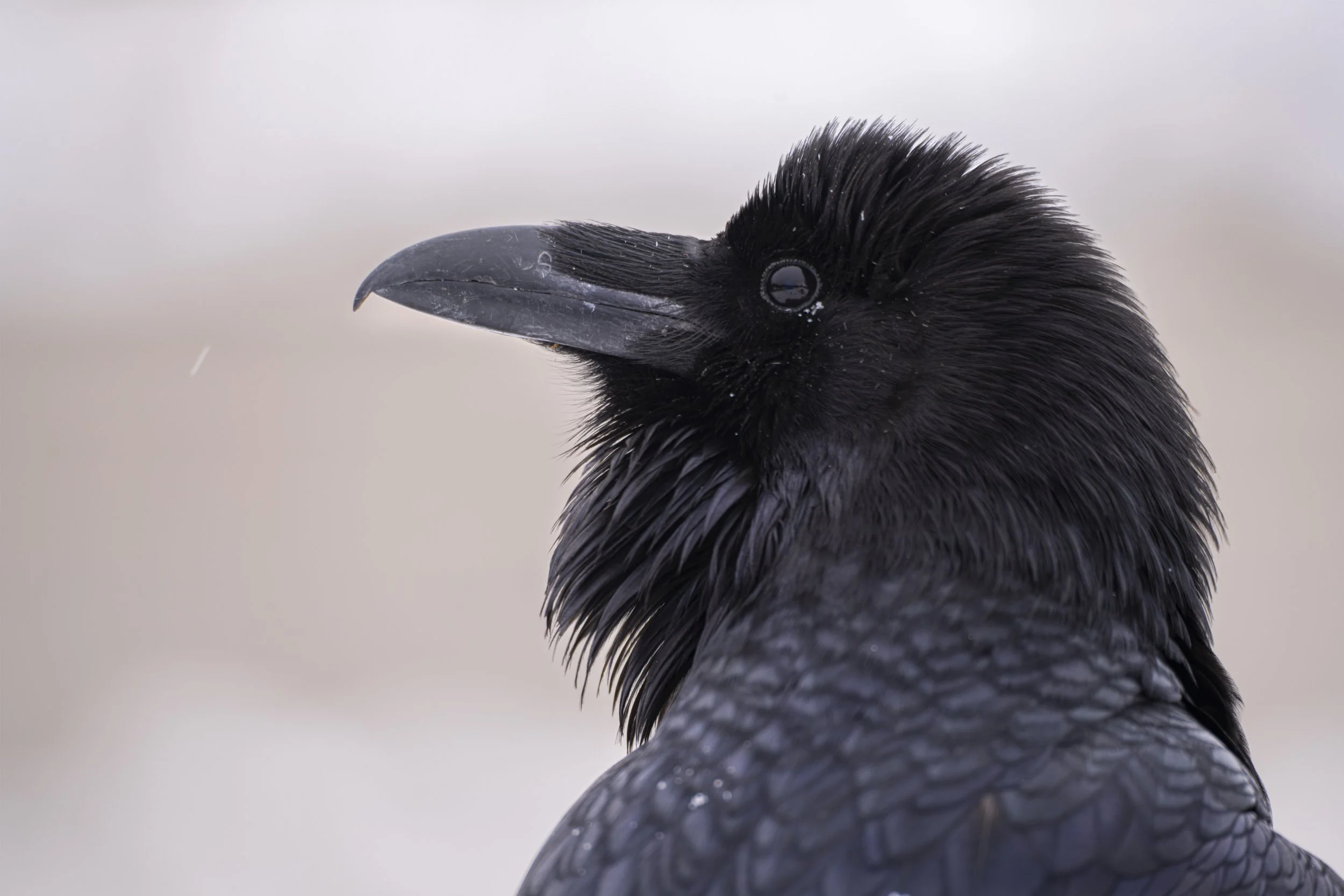
Common raven
Corvus corax
Northern Michigan’s habitat generalist
Ravens hold a significant ecological importance in Michigan, playing a multifaceted role that resonates throughout the state's ecosystems and history. Ecologically, ravens contribute to the balance of nature as adept scavengers, helping to cleanse the landscape by consuming carrion and organic debris. Their presence aids in preventing the spread of disease by swiftly removing animal carcasses. Additionally, their foraging behaviors impact insect populations, contributing to pest control in agricultural and forested areas.
In the diverse landscapes of northern Michigan, these intelligent birds are often found in a range of environments, from rugged forests to open fields. Within this region, ravens show a preference for habitats that offer a combination of wooded areas and expansive clearings. The dense coniferous forests provide shelter, nesting sites, and protection from the elements, while the open spaces offer opportunities for foraging and spotting potential food sources. Their presence is notable around freshwater bodies like lakes and rivers, where they can scavenge for aquatic life and carrion.
Intelligent birds
Ravens are renowned for their exceptional intelligence among avian species. Their cognitive abilities have been extensively studied and observed, showcasing their problem-solving skills, communication prowess, and capacity for learning. Some key aspects of raven intelligence include:
1. Problem Solving: Ravens are skilled at solving complex puzzles and tasks. They have been observed using tools in the wild, such as using sticks to extract insects from crevices or cracking nuts by dropping them from a height. This ability to plan and execute tool use demonstrates their foresight and adaptability.
2. Communication: Ravens possess a wide range of vocalizations that allow them to convey different messages. Studies have shown that they can communicate with each other about the location and type of food, the presence of predators, and even form alliances with other ravens to defend territories.
3. Social Intelligence: Ravens exhibit sophisticated social interactions. They are known to form intricate social hierarchies and engage in cooperative behaviors such as mobbing larger predators to protect their nests. They can also share information about food sources with other ravens, displaying a level of cooperation and reciprocity.
4. Self-awareness: Through experiments involving mirror self-recognition tests, ravens have demonstrated a degree of self-awareness. This ability is considered a marker of high cognitive function, as it indicates an understanding of one's own reflection and identity.
5. Memory: Ravens possess excellent memory, which aids them in recalling locations of food caches and remembering the identities of individuals within their social group. Their ability to remember specific individuals suggests a capacity for recognizing complex social relationships.
6. Innovation: Ravens display innovative thinking when faced with new challenges. They can adapt their behaviors based on changing circumstances and come up with novel solutions to problems.
7. Playfulness: Ravens engage in play activities that serve to hone their skills and cognitive abilities. They have been observed engaging in games such as sliding down snow-covered roofs, which could indicate a form of intelligent playfulness.
8. Learning and Imitation: Ravens can learn from observing the actions of others, including humans. They are capable of imitating novel actions, which indicates a level of observational and cognitive learning.
The combination of these traits showcases the impressive intelligence of ravens, making them one of the most cognitively advanced bird species. Their ability to adapt, learn, and interact with their environment in such intricate ways underscores their remarkable role in ecosystems and their significance in various cultures throughout history.
Raven or Crow?
Distinguishing between a raven and a crow can be challenging due to their similar appearances, but a few key features can help you differentiate them. Ravens are generally larger, with a wingspan often exceeding that of crows. When observed side by side, ravens appear more robust, with wedge-shaped tails and a diamond-shaped profile in flight. Their calls also differ—ravens emit a deep, croaking sound, while crows produce a more nasal caw. Additionally, raven feathers can have a purplish or iridescent sheen when caught in the right light, setting them apart from the matte black feathers of crows. While subtle, these distinctions offer valuable clues for identifying these two intelligent and captivating corvid species.




